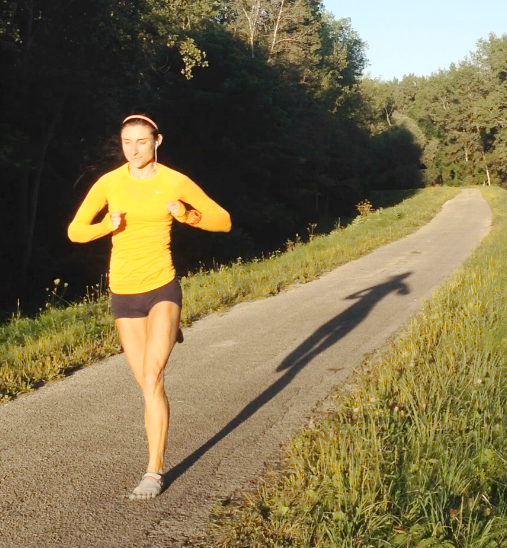Hitting the track and cracking out high intensity interval workouts is by far, one of the best ways to develop a faster pace. To reap all the benefits of doing speed-work intervals is to run more than break more, that is, you want to keep your break time between sets very short. Easier said than done, I know! So, what is the fastest way to catch your breath between each sets?

How to Recover Quickly During High Intensity Interval Workouts
Your coach probably told you to stand tall, walk with your hands up behind your head in order to suck in more wind and catch your breath as quickly as possible. But, the gist of new reports show that this method of ‘catching your breath’ after a fast run doesn’t work. So what does work?
A study by Skaggs et al. 2016 examined how arm and upper body posture affected ventilation in high school athletes where maximum voluntary ventilation was measured in three different body postures: standing with hands behind the head, arms down at the side, and leaning forward with the hands rested on the knees.
Perhaps the most startling finding of the study was that the body position that allowed the highest maximum ventilation, i.e. the best recovery body-position, was leaning forward with the hands on the knees!
There is actually little evidence showing that the standard standing tall with your hands behind your head recovery method is best for ventilation. But I was very surprised to read that leaning forward with your hands on your knees is better! My coaches always advised against it. In the current study however, the researchers discovered that leaning forward while placing the hands on the knees led to a greater rate of maximum ventilation as compared with standing with the arms at the sides and standing with the hands behind the head. So, there’s something to think about. Do whatever works for you, but don’t be afraid to bend forward and catch your breath.
More Run Forefoot:
What is a Forefoot Strike Landing?
Things to Consider When Going Minimal
Running with a Tibial Stress Fracture
References:
Skaggs et al. The Effect of Arm and Body Position on Respiratory Ventilation in High School Athletes: A Pilot Study. Int J Athl Ther Train, 2016; 21(1):30–35.
Bretta Riches
BSc Neurobiology; MSc Biomechanics candidate, ultra minimalist runner & founder of RunForefoot. I was a heel striker, always injured. I was inspired by the great Tirunesh Dibaba to try forefoot running. Now, I'm injury free. This is why I launched Run Forefoot, to advocate the health & performance benefits of forefoot running and to raise awareness on the dangers of heel striking, because the world needs to know.
Latest posts by Bretta Riches (see all)
- Heel Strike Running Causes Bone Pain - 29/04/2024
- Heel Strike Running Causes Slipped Discs - 25/04/2024
- How to Train Yourself to Not Heel Strike When Running - 24/04/2024
